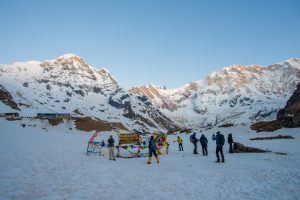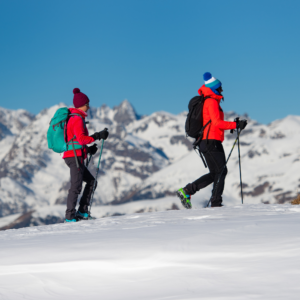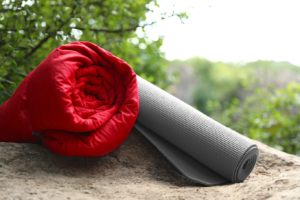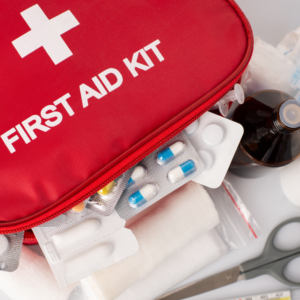Is The Winter Season Suitable For Trekking In Nepal
November 14, 2024 admin

Winter trekking in Nepal can offer a magical adventure through snow-covered trails, with fewer crowds and stunning Himalayan views. For experienced trekkers with the right gear and a readiness to tackle the cold, the winter season can be a great time to explore the trails in Nepal. However, winter treks require careful preparation, including high-quality cold-weather clothing and accessories, as temperatures can plunge below freezing in higher altitudes.
Let’s dive into what makes winter trekking unique, what you should carry, and some crucial considerations to keep you safe and comfortable on your winter trek.
Table of Contents
ToggleWhy Winter Trekking in Nepal Can Be Rewarding

- Fewer Crowds: With lower demand, winter treks tend to be less crowded, giving you a more peaceful and intimate experience with nature.
- Budget-Friendly: Winter often brings better deals on accommodation and trekking packages.
- Breathtaking Winter Views: Snow blankets the mountains, creating a beautiful, crisp winter landscape.
However, winter trekking is not for everyone. If you’re sensitive to the cold or new to trekking, winter might not be ideal unless you’re prepared to invest in high-quality gear and are ready for a physically demanding experience.
Essential Gear for Winter Trekking in Nepal
To fully enjoy and stay safe on a winter trek, it’s essential to pack the right gear. Here’s a breakdown of what you should carry:
Clothing Essentials

- Base Layers: Thermal tops and bottoms that wick away moisture are critical for staying warm and dry.
- Insulating Layers: A good fleece or down jacket will help retain body heat.
- Outer Shell: Waterproof and windproof jackets and pants protect you from snow, wind, and moisture.
- Trekking Pants: Insulated and water-resistant pants provide warmth and flexibility.
- Gloves and Hat: Insulated gloves and a warm beanie are must-haves to keep your hands and head warm.
- Neck Gaiter: Shields your face and neck from cold wind and potential frostbite.
- Thermal Socks: Wool or synthetic thermal socks keep feet warm and dry.
Footwear

- Hiking Boots: Choose waterproof, insulated boots for traction on icy terrain and ankle support.
- Gaiters: Protect your lower legs and boots from snow, debris, and water.
Key Accessories

- Sunglasses: Polarized sunglasses are crucial to prevent snow blindness from the sun’s reflection on snow.
- Headlamp: With shorter daylight hours, a headlamp is essential for visibility in low light.
- Trekking Poles: They help with stability on icy or uneven terrain.
- Backpack: A well-fitted, sturdy backpack will make it easier to carry your essentials.
- Insulated Water Bottles: Hydration is important, so use insulated bottles to keep water from freezing.
Other Essentials

- First Aid Kit: Include altitude sickness medication, pain relievers, and basic supplies.
- Personal Medications: Carry any prescribed medicines.
- Toiletries: Don’t forget essentials like toothpaste, hand sanitizer, and wipes.
- Entertainment: Books or cards can be enjoyable during downtime.
Health and Safety Tips for Winter Trekkers
- Stay Hydrated: Cold weather often leads people to drink less water, so be mindful about staying hydrated.
- Know Your Limits: Winter trekking can be physically challenging; listen to your body and avoid overexertion.
- Prepare for Cold-Related Illnesses: Frostbite and hypothermia are risks in winter trekking, so dress appropriately and stay aware of the symptoms.
Is Winter Trekking Right for You?
Winter trekking in Nepal is best suited for trekkers who are experienced, physically fit, and prepared for the cold. Inexperienced or first-time trekkers may find the winter conditions too challenging, as higher altitudes bring extreme cold and potential health risks. If you’re sensitive to cold or have a health condition affected by low temperatures, consult a doctor before attempting a winter trek.
Conclusion
With the right preparation, gear, and fitness, winter trekking in Nepal can be a magical experience. The snow-covered trails, tranquil atmosphere, and clear winter skies reveal a side of the Himalayas that few get to see. By being physically and mentally prepared, you can make the most of Nepal’s winter trekking season while ensuring a safe and memorable journey.
Ready to explore Nepal? Contact a licensed trekking agency Luxury Holiday Trek today to find the perfect guide and start planning your adventure! Contact us at +977 984-3254676.










